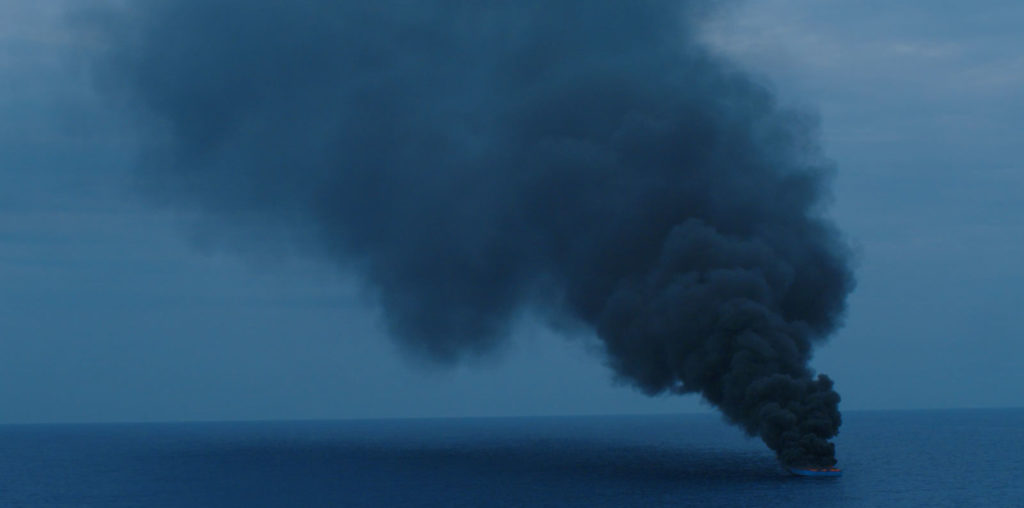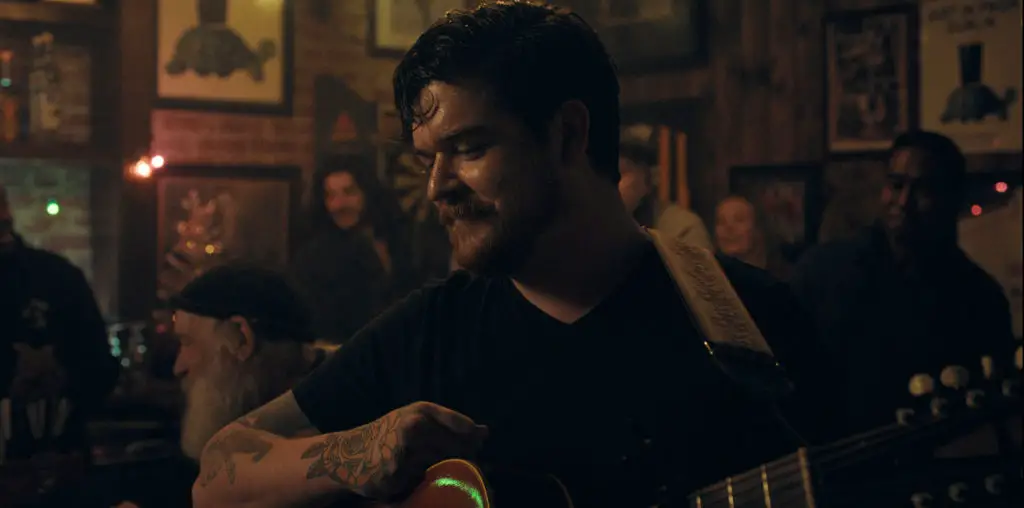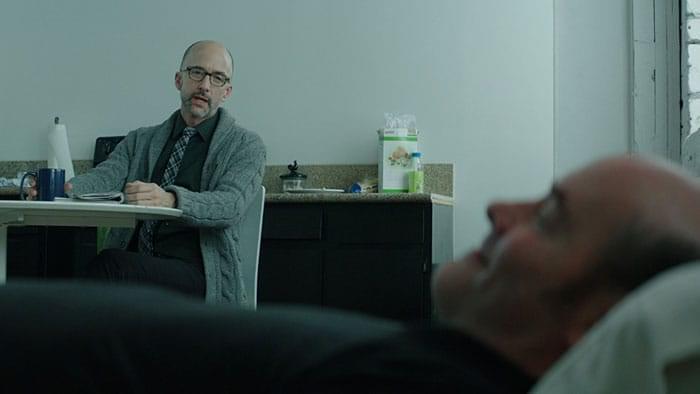
BOOTLEG FILES 334: “Ten Little Indians” (1975 feature film starring Oliver Reed, Elke Sommer and Stephane Audran).
LAST SEEN: We cannot confirm the last public exhibition of this film.
AMERICAN HOME VIDEO: A VHS video was briefly released, but there has been no DVD release.
REASON FOR BOOTLEG STATUS: The film has been out of circulation for many years.
CHANCES OF SEEING A COMMERCIAL DVD RELEASE: It has already turned up in Europe, so a U.S. release is possible at some point.
In 1939, Agatha Christie published a unique mystery novel about an unknown killer that used a nursery rhyme as the basis for killing 10 people trapped in a hotel on an isolated island. Strangely, Christie decided that “Ten Little N*****s” was the perfect title for the book. While her British publishers couldn’t see anything wrong with that, her U.S. publishers recognized a problem – even by the standards of the Jim Crow era, it was a bit much. Thus, the book became known as “Ten Little Indians” – although the title was altered again to “And Then There Were None” when it was adapted by Christie as a Broadway play, which was the basis of a 1945 film.
In the early 1960s, Christie’s work received a revival of interest thanks to a series of films based on the Miss Marple mysteries. These low-budget black-and-white capers were built around the eccentric British comedy veteran Margaret Rutherford. The success of these films inspired producer Harry Alan Towers to adapt a Christie novel into a film. He created a new version of “Ten Little Indians” in 1965, and modernized the story via a different location (an Alpine resort instead of an island) and sexy casting (Shirley Eaton and Daliah Lavi for the male moviegoers, Hugh O’Brian and Fabian for the ladies). The film turned out to be a critical and commercial flop.
Towers was apparently enchanted with the Christie property – and since he owned the screen rights, he decided to dust it off for another big screen version. Thus, 10 years after his 1965 version premiered, Towers was back with yet another “Ten Little Indians.”
The casting of the 1975 version of “Ten Little Indians” looked like a Noah’s Ark of talent: two European bombshells (Elke Sommer and Stephane Audran), two 007 villains (Gert Froebe and Adolfo Celi), two old-time hams of British cinema (Richard Attenborough and Herbert Lom), two stalwarts of the European B-movie circuit (Alberto De Mendoza and Maria Rohm) and two larger-than-life pop culture icons (Oliver Reed and Charles Aznavour).
For reasons that no one has been able to explain, this version of “Ten Little Indians” was shifted to a grand hotel in the middle of the Iranian desert. The Shah Abbas Hotel in the city of Ishfahan was used for the location, and creative camerawork gave the impression that the resort was located far from civilization. To enforce the sense of isolation, the film’s opening sequence finds the ill-fated characters ferried to the hotel by a helicopter – with a later explanation that there is nothing within a 200-mile radius except desert sand and a few funky ruins. Oh, and the telephones stopped working right after everyone arrived!
Yet this exotic location brings a new wave of style problems. The genius of the Christie novel was the manner in which the murders coincided with the “Ten Little N*****s/Indians” nursery rhyme. The Iranian setting made some of the nursery rhyme murders impossible (there is no bumblebee for a fatal sting or sea for drowning), while the local color was substituted for shock value (a Persian strangulation technique and a death from thirst in the desert came into play). Furthermore, the loss of electric power late in the story created an obvious problem: how could everyone walk about in a desert hotel that had no air conditioning and never break a sweat?
Peter Collinson, a director who made one good film (the original version of “The Italian Job”) and a lot of junk, was behind the camera. His penchant for shooting low angle shots created a weirdly distorted visual style. Vincent Canby, reviewing this film for The New York Times, tartly observed: “For reasons that apparently have to do with Mr. Collinson’s concept of menace, and how to create a sense of it, most of the movie seems to have been shot by a camera 14 inches above the floor, or maybe by a cinematographer who is only 14 inches tall. After about an hour of this, you know how the world looks to a miniature poodle.”
But despite these irregularities, “Ten Little Indians” is a genuinely entertaining film – albeit in a diverting but stupid manner. The film’s all-star cast clearly didn’t bother following any direction, which results in some joyous hamming. Charles Aznavour manages to sneak in a performance of his pop classic “The Old Fashioned Way” (complete with an inexplicable orchestral back-up), while Stephane Audran flirts with him. Richard Attenborough and Herbert Lom appear to be having a contest to see which one can come across as being the most very, very, very serious man on screen, and Gert Froebe runs about the film as if he is still chasing James Bond in Fort Knox.
However, none of this compares to the ultimate china shop bull, Oliver Reed. Barely keeping a straight face, he roams the film in a back- and backside-slapping good mood that seems highly peculiar in this environment. The funniest moment comes in a kitchen sequence when Elke Sommer offers him a glass of milk. For a moment, Reed looks at her, grins a Cheshire Cat grin, and clenches his lips while his eyes clearly state: “I’m Oliver Reed…and you’re asking me if I want a glass of…milk???”
“Ten Little Indians” was a terrific bomb when it was released, with nearly every critic claiming it was inferior to the 1945 “And Then There Were None” and even the 1965 stinker. Incredibly, producer Towers decided to make yet another version of the story in 1989, with an African safari used as the location and Herbert Lom included again in the cast.
“Ten Little Indians” was briefly available on VHS video in the pre-DVD days, but it has been out of circulation in the U.S. for years. There has been a DVD release on a French label, and the VHS release has been used to sell bootleg DVDs in the U.S. The film will probably turn up sooner or later – the Christie name and the cast should generate some interest.
Curiously, most of the film versions deviate completely from the original grim ending of Christie’s book; the happier ending from the 1940s stage version is preferred in these adaptations. (If you never read the book or saw any of the films, I won’t spoil it for you.) There was a 1987 Russian version (made during the tail end of the Soviet Union’s state-sponsored cinema) that remained faithful to the source material, but I don’t think it was ever released in the West. There are also unauthorized Bollywood musical and U.S. pornographic remakes, and I suspect these are even less faithful to the Christie book than the Towers’ films. I’ve never seen these three versions, and I would welcome anyone who has copies to share them with me for future review in this column!
IMPORTANT NOTICE: The unauthorized duplication and distribution of copyright-protected material, either for crass commercial purposes or profit-free s***s and giggles, is not something that the entertainment industry appreciates. On occasion, law enforcement personnel boost their arrest quotas by collaring cheery cinephiles engaged in such activities. So if you are going to copy and distribute bootleg videos and DVDs, a word to the wise: don’t get caught. Oddly, the purchase and ownership of bootleg videos is perfectly legal. Go figure!



That 1987 Russian version is available on YouTube,where it lurks around in its fully uncut Russian language form. And I’m surprised that both the 1975 and 1989 versions have yet to make it onto DVD,even as MOD(Made On Demand) DVDs(on various companies’ Archives Editions),the format which the 1965 version is currently available on(after being released as a regular DVD for a few years).